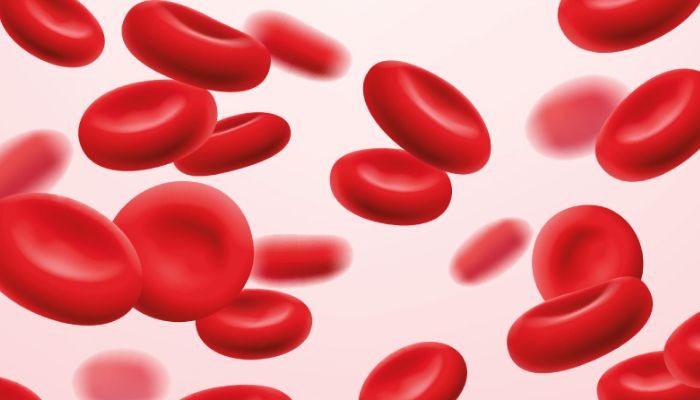|
Researchers analyzed OxyHem levels in 267 patients screened for pulmonary hypertension by Andrea Lobo, PhD (Scleroderma News) Oxygenated hemoglobin may be a new prognosis biomarker for systemic sclerosis (SSc) patients screened for pulmonary hypertension (PH), a study in Germany shows. Low levels of oxygenated hemoglobin (OxyHem), the protein that carries oxygen to body tissues, were significantly associated with worse survival among SSc patients. Also, the combination of a low predicted diffusion capacity for carbon monoxide (DLCO) — a standard lung function assessment — with low OxyHem may predict developing PH. “This study provides important insights into prognostic predictors and stratification models in SSc patients screened for PH,” the researchers wrote in “Oxygenated hemoglobin as prognostic marker among patients with systemic sclerosis screened for pulmonary hypertension,” which was published in Scientific Reports. A feature of SSc is the accumulation of scar tissue in the skin, which can affect internal organs. The level of organ involvement predicts the disease’s outcome. Pulmonary complications, including pulmonary arterial hypertension, are the leading cause of death among people with SSc. Screening and early diagnosis are essential to the disease’s prognosis. Previous studies identified oxygen saturation (blood oxygen levels) and anemia, or reduced levels of red blood cells in the blood, as prognostic predictors of SSc. Analyzing oxygenated hemoglobin levels as prognostic marker
Researchers in Germany analyzed OxyHem levels as a potential prognostic marker in 267 SSc patients who were screened for PH. Their mean age was 59.8 and 82% were women. Most (73.8%) had limited cutaneous SSc, whereas the rest had diffuse cutaneous SSc, with a nine-year mean duration of the disease. Most participants (52.8%) had signs of PH, as assessed by their pulmonary arterial pressure (PAP), and 26.2% had significant interstitial lung disease (ILD), a group of disorders marked by inflammation and scar tissue building up in the lungs. In 19 patients, PH was due to left heart disease. Coexisting disorders were found in 166 patients. The most common were high blood pressure, coronary heart disease, and obesity. Overall, 94 patients had low OxyHem levels — 12.5 g/dl or lower — and 173 patients had OxyHem above 12.5 g/dl. Those with low OxyHem values were more frequently women (92.6% vs. 76.3% in patients with higher OxyHem values) and mainly had limited cutaneous SSc (79.8% vs. 70.5%). They also had more functional impairment as reflected by their World Health Organization functional class and a shorter distance on the 6-minute walking test (408.8 vs. 437.8 meters), a measure of exercise capacity. They also had higher PAP and pulmonary resistance to blood flow (pulmonary vascular resistance, PVR). Pulmonary function and low OxyHem Pulmonary function parameters were significantly more affected in those with low OxyHem, including maximal vital capacity, forced expiratory volume in one second (FEV1), and total lung capacity (TLC). Vital capacity and FEV1 are measures of the amount of air forcibly exhaled after a deep breath and total lung capacity is the volume of air in the lungs with a maximal inspiration. The mean overall survival of the patients studied was 7.7 years from baseline (study start). Within the 3.2-year observation period, 47 (17.6%) patients died. The most common cause was PH (22 patients), followed by cancer and PH and/or ILD. Low OxyHem, age at baseline of 60 or more, having ILD, a high PVR and low DLCO (equal or below 65%) were significantly associated with worse survival. A subsequent analysis that looked into multiple variables confirmed low DLCO, having ILD, and older age as predictors of shorter survival. The survival rate was significantly lower in those with low OxyHem. At 1, 3, and 5 years, the rate was 98.7%, 82.9%, and 71.2% in those patients, respectively, compared to 99.3%, 95.7%, and 80.3% for those with higher OxyHem. “This study detected for the first time OxyHem [equal or lower than] 12.5 g/dl as a prognostic predictor in SSc patients,” the researchers wrote, adding the results underscore the “impact of oxygenation and the significance of oxygen transport among patients suffering from extended fibrosis [scarring] and vasculopathy [blood vessel disease], that typically characterize SSc.” At baseline, patients with PH had the highest rate of low OxyHem. Low OxyHem could predict PH at baseline with 41.8% sensitivity and 72.7% specificity. Combining low OxyHem with low DLCO predicted PH with 76.1% sensitivity and 50.6% specificity. Sensitivity refers to the ability of the measure to detect correctly a patient with the disease, whereas specificity is the ability to detect people without the disease. During the follow-up, using low DLCO, age 60 or older, and the presence of ILD predicted PH with 91.1% sensitivity and 34.6% specificity when at least one of these three risk factors was met. A low DLCO and low OxyHem combination predicted PH with a sensitivity of 58.7% and a specificity of 72.9% in patients with at least one of the two risk factors. The study is limited by the sample population and its retrospective nature, which led to a smaller amount of data collected, the researchers noted. The results also were not compared to healthy individuals. Further research is needed, they said. Comments are closed.
|
AuthorScleroderma Queensland Support Group Archives
July 2024
Categories
All
|
Scleroderma Association of Queensland
©Scleroderma Association of Queensland. All rights reserved. Website by Grey and Grey.

